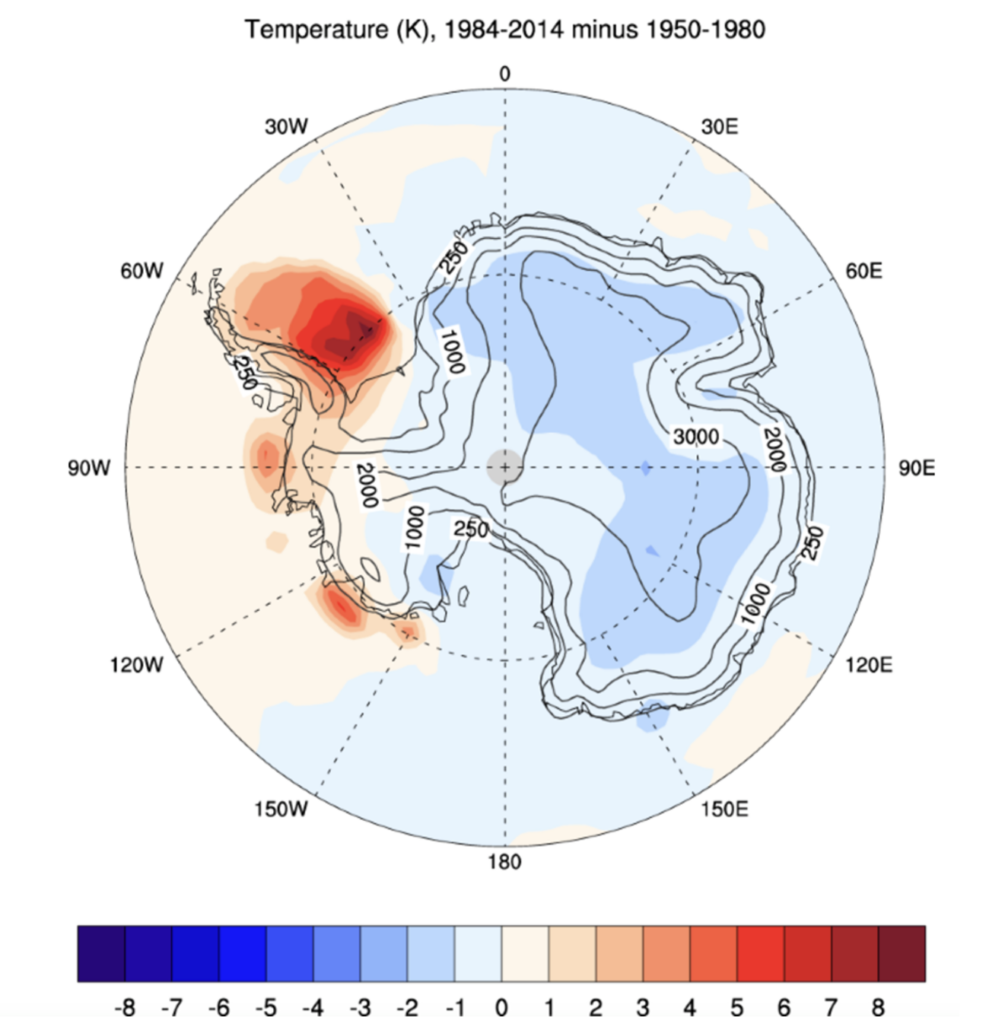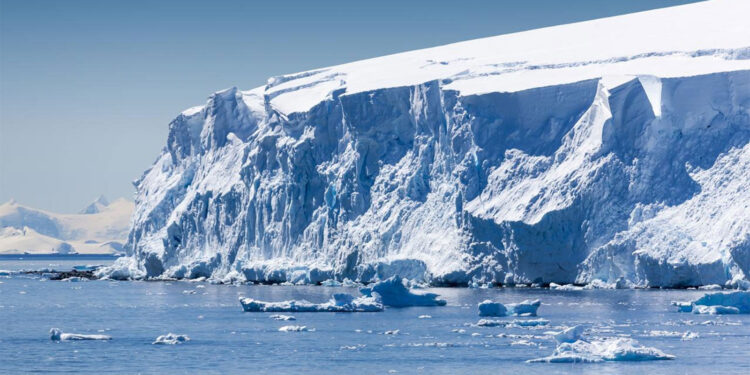Sensational new scientific findings at a site on the West Antarctica ice sheet near the Thwaites ’Doomsday’ Glacier indicate that current ice levels are up to eight times thicker than they were around 8,000 years ago. A group of 13 scientists led by Greg Balco of the Berkeley Geochronology Centre carried out extensive field work in the Amundsen Sea Embayment between the Thwaites and Pope glaciers and found current thickness levels of 40 metres compared with measurements in the recent past ranging from 2-7m. The work is of major importance since it casts new light on the cycles of ice production and loss that have always occurred in an area riddled with buried volcanoes.
The scientists noted that “subglacial bedrock exposure” analysis gives “direct, unambiguous evidence for ice thinning and subsequent thickening of at least 35m during the past several thousand years”. Furthermore, the work shows that ice thinning is a natural process that is reversible. It is noted that this is an important finding given the concerns that ice sheet thinning at the nearby glaciers including Thwaites may lead to significant deglaciation across the West Antarctica ice sheet, and subsequent sea level rise.
The scientists also refer to evidence from other field work that shows rapid early and middle Holocene ice thinning up to around 7,000 years ago throughout the Amundsen sea area. In addition, they found that there was no evidence to suggest that the ice has been thicker than its present levels for over 4,000 years. Record recent highs no less – hold the front page, or maybe not!
It is almost certain that these findings will be ignored in the mainstream media where the political requirements of ‘settled’ science have led to an effective ban on the discussion of natural geological influences on the climate. Antarctica is a difficult area to drum up climate alarm about since warming has been “nearly non-existent” over the last seven decades of recorded history. Changes around the massive Thwaites glacier are one of the key poster stories designed to spread global climate fear, and promote the solution of the collectivist Net Zero project.

The above graph from the recent Singh and Polvani paper shows recent warming only in the west of the continent. Of course, it begs the question for those who attribute all climate change to humans burning fossil fuel – why would a well-mixed atmospheric gas like carbon dioxide produce just one warming spot in Antarctica, and have no effect over the rest of the ice-covered continent? A more plausible explanation for the localised warming is the presence of volcanoes, particularly in the light of the recent discovery of an additional 91 of them in the region. In total, there are 138 identified volcanoes in the West Antarctica Rift System, with heights ranging from 300 to 12,600 ft.
The No Tricks Zone science site adds to the discussion by noting that while the Earth’s crust has an average thickness of 40 km, the Thwaites-Pine Island-Pope glacier region has a thinner covering between 10-18 kms, exposing the base of the ice to 580C tectonic trenches. NTZ references work in Dziadek et al (2021) that the “elevated geothermal heat flow band” is exerting a “profound influence on the flow dynamics of the Western Antarctica Ice Sheet”.
Thwaite has been tagged the ‘Doomsday Glacier’ since perceived instabilities can be whipped up to promote fear about massive potential sea level rises. When the BBC green activist-in-chief Justin Rowlatt flew to the area, he witnessed an “epic vision of shattered ice”. To him, the Antarctic is the “frontline of climate change”. He went on to note that it was a place “where the equilibrium that has held our world in balance for tens of thousands of years is beginning to slip and crash”. The National Maritime Museum in Greenwich recently posted a film on YouTube saying, “Within decades the massive Thwaites glacier in West Antarctica could collapse.” The Guardian was recently worried that “cracks and fissures” made breakup more likely.
NTZ notes there are many scientifically established natural causes of ice melt in the region. The new Balco study is said to categorically undermine claims that the ice melt occurring is “unusual, unprecedented, or unnatural”. Interestingly, the Balco-led scientists suggest that possible stability during the past thinning/thickening phases was provided by a “glacioisostatic rebound feedback”. This means that the Earth’s surface naturally rises from underlying layers as huge weights of ice are removed. This effect is common across the planet, where some land mass is rising as a result of the lifting of the recent period of glaciation.
Chris Morrison is the Daily Sceptic’s Environment Editor.
Stop Press: Hollywood director Adam McKay say he’ll triple donations to Just Stop Oi this weekend.












To join in with the discussion please make a donation to The Daily Sceptic.
Profanity and abuse will be removed and may lead to a permanent ban.